Weather
Science for Families: Activities supporting the ‘Weather’ session
Science for Families: Activities supporting the ‘Weather’ session
This resource is designed to accompany the Science for Families course delivered by NUSTEM or one of our partners. It’s a six-week parent and child course delivered in primary schools.
You’re welcome to use the resources for other purposes, but they might not make quite as much sense!
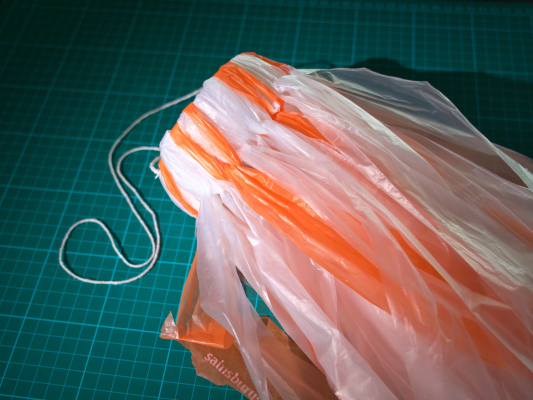
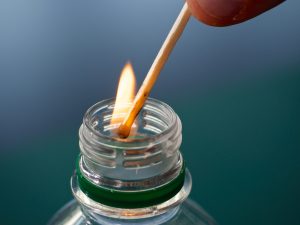
Nice work! That’s a mighty fine-looking windsock your family made today. And what’s that? A cloud in a bottle? Very cool.
We’re assuming you’re here because the world of weather has sparked your interest. Well, congratulations! You’re on your way to becoming a meteorologist, the type of scientist who studies the weather. Let’s start by taking a look at that plastic bottle with the cloud in it. Here’s a question:
What’s really going on in there?
Your bottle is mostly filled with air, but you also put in a little warm water and some smoke, from the match you dropped inside. The water has created some water vapour (that’s water in the form of a gas), mixed with the air in the bottle. When you squeeze the bottle, the air is compressed (forced into a smaller space), which also causes it to get just a little bit warmer.
When you let go, the water vapour and air mixture expand back to their original volume. That cools them down, and some of the water condenses – which makes it forms tiny droplets – on the smoke particles. That’s what you see as your cloud. Clouds in the sky don’t form because somebody was squeezing the atmosphere and let go, but the rest of what’s happening is quite similar. Changes in pressure cause water to stay as a gas, or to condense into droplets. When droplets occur close to each other, we see a cloud.
If you like clouds, proudly call yourself a nephologist (a cloud scientist). You might like the BBC’s excellent cloud spotting guide to find out more.
This is a nice activity that will help you to measure rainfall in your backyard. It’s easy to make. You’ll need a pair of scissors, a 2 litre plastic bottle, a measuring jug, and a permanent marker pen.
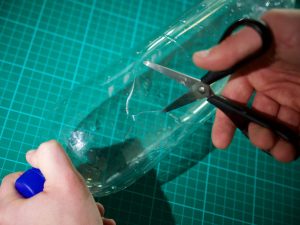
Take a clear 2 litre plastic bottle and carefully cut off the top to make a funnel.
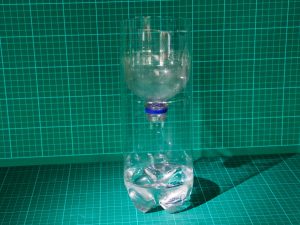
Turn your new funnel upside-down, then place it into the remaining part of the bottle.
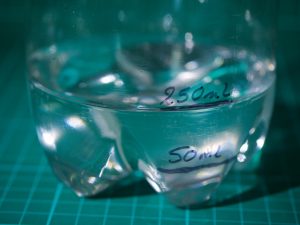
To measure the amount of rain that has fallen you can mark different volumes onto the plastic bottle. To do this:
Now you’ve made your rain gauge, pop it out in your garden or back yard and wait for the rain – you’ll be able to measure the mount of rainfall each day and compare it with the day before!

 Science for Families: Light
Science for Families: LightWe may request cookies to be set on your device. We use cookies to let us know when you visit our websites, how you interact with us, to enrich your user experience, and to customize your relationship with our website.
Click on the different category headings to find out more. You can also change some of your preferences. Note that blocking some types of cookies may impact your experience on our websites and the services we are able to offer.
These cookies are strictly necessary to provide you with services available through our website and to use some of its features.
Because these cookies are strictly necessary to deliver the website, refusing them will have impact how our site functions. You always can block or delete cookies by changing your browser settings and force blocking all cookies on this website. But this will always prompt you to accept/refuse cookies when revisiting our site.
We fully respect if you want to refuse cookies but to avoid asking you again and again kindly allow us to store a cookie for that. You are free to opt out any time or opt in for other cookies to get a better experience. If you refuse cookies we will remove all set cookies in our domain.
We provide you with a list of stored cookies on your computer in our domain so you can check what we stored. Due to security reasons we are not able to show or modify cookies from other domains. You can check these in your browser security settings.
These cookies collect information that is used either in aggregate form to help us understand how our website is being used or how effective our marketing campaigns are, or to help us customize our website and application for you in order to enhance your experience.
If you do not want that we track your visit to our site you can disable tracking in your browser here:
We also use different external services like Google Webfonts, Google Maps, and external Video providers. Since these providers may collect personal data like your IP address we allow you to block them here. Please be aware that this might heavily reduce the functionality and appearance of our site. Changes will take effect once you reload the page.
Google Webfont Settings:
Google Map Settings:
Google reCaptcha Settings:
Vimeo and Youtube video embeds:
The following cookies are also needed - You can choose if you want to allow them:
You can read about our cookies and privacy settings in detail on our Privacy Policy Page.
Privacy Notice and Cookies 2025
Leave a Reply
Want to join the discussion?Feel free to contribute!